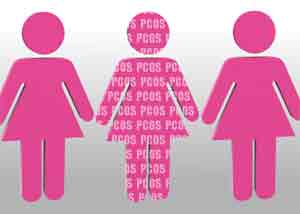Experts Clarify Conflicting Criteria for Diagnosing Polycystic Ovary Syndrome
 Endocrine Society publishes Clinical Practice Guideline on diagnosis, treatment of leading cause of infertility
Endocrine Society publishes Clinical Practice Guideline on diagnosis, treatment of leading cause of infertility
The Endocrine Society issued a Clinical Practice Guideline (CPG) for the diagnosis and treatment of polycystic ovary syndrome, the most common hormone disorder in women of reproductive age and a leading cause of infertility.
The CPG, entitled “Diagnosis and Treatment of Polycystic Ovary Syndrome: An Endocrine Society Clinical Practice Guideline” will appear in the December 2013 issue of the Journal of Clinical Endocrinology and Metabolism (JCEM), a publication of The Endocrine Society.
Polycystic ovary syndrome, or PCOS, affects millions of women, according to the National Institutes of Health. The condition causes diverse symptoms, and its causes are poorly understood. The definition and even the name of PCOS have been subject to debate. An NIH panel concluded in January 2013 that the name’s focus on a specific symptom – ovarian cysts – that is not present in all PCOS cases caused confusion about the condition. Three separate diagnostic classification systems have been developed to help identify PCOS.
“The Endocrine Society’s CPG is designed to help physicians and patients navigate our evolving understanding of this complex condition,” said Richard S. Legro, MD, of the Penn State University College of Medicine, and chair of the task force that authored the guideline. “The Society’s recommendations allow physicians to make the diagnosis if clear symptoms are present without resorting to universal hormone tests or ultrasound screening.”
In the CPG, The Endocrine Society recommends that a diagnosis be made if adult women have two of the three cardinal features of PCOS (diagnostic criteria supported by the NIH panel):
• Excess production of male hormones called androgens.
• Anovulation, a condition where the ovary does not release a mature egg each month. This causes irregular menstrual cycles.
• The formation of clusters of pearl-size cysts containing immature eggs in the ovaries, which is called polycystic ovaries.
Other recommendations from the CPG include:
• Because women with PCOS face an increased risk of pregnancy complications such as gestational diabetes, preterm delivery and preeclampsia that can be exacerbated by obesity, women should have their body mass index, blood pressure and oral glucose tolerance assessed prior to conceiving;
• Following diagnosis, women with PCOS should be examined for skin and hair complications including excess hair growth and acne;
• Although women with PCOS have some of the same risk factors associated with the development of endometrial cancer, they should not routinely undergo ultrasound screening for endometrial thickness;
• To gauge metabolic risk, adolescents and adult women with PCOS should be screened for increased obesity using body mass index and waist circumference measurements;
• Clinicians should give adolescents and adult women with PCOS an oral glucose tolerance test to check for type 2 diabetes or impaired glucose tolerance because they are at increased risk of these conditions; and
• Initial treatment of type 2 diabetes or impaired glucose tolerance in women with PCOS should be diet and exercise, with metformin as a second-line therapy.
The Hormone Health Network, The Endocrine Society’s public education arm, has published a fact sheet that explains how PCOS affects the body and outlines treatment options at http://www.hormone.org/diseases-and-conditions/womens-health/polycystic-ovary-syndrome.
Source Newsroom: Endocrine Society

